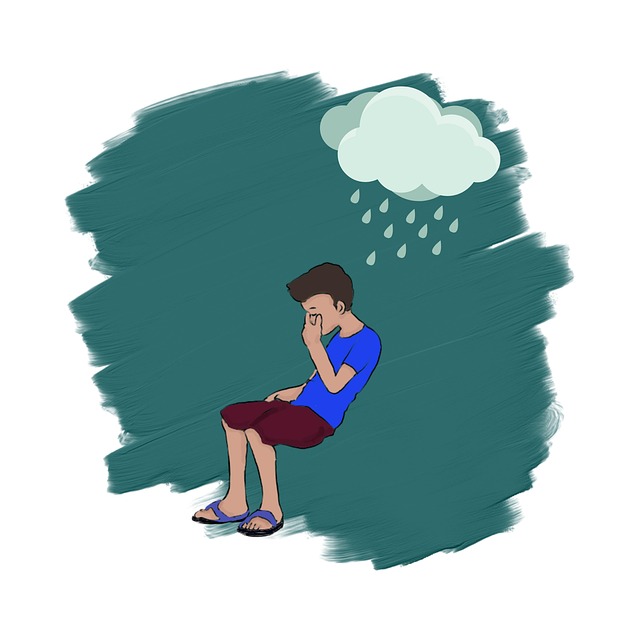Castle Rock Therapy: Teaching Emotion Regulation for Developmental Disabilities
Castle Rock Developmental Disability Therapy (CRDDT) emphasizes learning emotion regulation techniqu…….
In the realm of developmental disability support, Castle Rock Developmental Disability Therapy (CRDDT) has emerged as a transformative approach, offering specialized care and therapeutic interventions. This comprehensive therapy aims to empower individuals with developmental disabilities, fostering their growth, independence, and overall quality of life. The article delves into the intricacies of CRDDT, exploring its historical roots, global reach, economic implications, technological integrations, regulatory framework, and the challenges it faces. By examining these aspects, we uncover the profound impact this therapy has on individuals, communities, and the global landscape.
Castle Rock Developmental Disability Therapy is a holistic treatment model designed to address the unique needs of individuals with developmental disabilities, including autism spectrum disorder (ASD), intellectual disabilities, and other similar conditions. It draws from various therapeutic modalities, combining elements of applied behavior analysis (ABA), cognitive behavioral therapy (CBT), and occupational therapy to create personalized intervention plans.
The core components include:
The roots of CRDDT can be traced back to the mid-20th century when early behavioral interventions for individuals with intellectual disabilities began gaining traction. Pioneers in the field, such as B.F. Skinner and Ole I. Lovaas, laid the foundation for applied behavior analysis, which remains a cornerstone of this therapy. Over time, CRDDT has evolved to incorporate advancements in cognitive science, occupational therapy, and family-centered practices.
In the 1980s, the increase in diagnoses of autism spectrum disorders led to a growing emphasis on early intervention and specialized therapies. This period witnessed the refinement of behavior analysis techniques and their application specifically to individuals with ASD. The 1990s and 2000s saw further integration of cognitive-behavioral strategies, recognizing the importance of addressing both behavioral and emotional aspects of developmental disabilities.
Castle Rock Developmental Disability Therapy has gained global recognition and adoption, with significant impact in various regions:
| Region | Impact and Achievements |
|---|---|
| North America | The United States and Canada have seen widespread implementation of CRDDT, with numerous specialized centers and clinics. Research studies from these regions contribute significantly to the global body of knowledge. |
| Europe | European countries like the UK, Germany, and Sweden have integrated CRDDT into their healthcare systems, often within comprehensive developmental disability support frameworks. |
| Asia Pacific | Countries such as Japan, Australia, and New Zealand have adopted elements of CRDDT, adapting them to local contexts and cultural sensitivities. |
| Middle East and Africa | Growing awareness and investment in developmental disability services in these regions have led to the introduction of CRDDT in select areas, offering hope for expansion. |
Several trends are influencing the global trajectory of CRDDT:
The global market for developmental disability services, including CRDDT, is experiencing growth due to rising awareness, changing social attitudes, and increased investment from governments and private entities. According to a report by ResearchAndMarkets.com, the global autism therapy market (a significant subset of CRDDT) is projected to reach USD 32.5 billion by 2027, growing at a CAGR of 14.6% during the forecast period (2020-2027).
CRDDT can have significant economic benefits:
This therapy contributes to economic systems by:
Technological advancements have revolutionized CRDDT, offering novel ways to deliver interventions and enhance outcomes:
The future holds immense potential for technological integration within CRDDT:
The provision of CRDDT is guided by various policies and regulations that vary across jurisdictions:
The policy landscape has a profound impact on the development and delivery of CRDDT:
Despite its successes, CRDDT faces several challenges:
| Challenge | Description | Strategies for Overcoming |
|---|---|---|
| Stigma and Misunderstanding: Stigma surrounding developmental disabilities can hinder access to CRDDT. | Educate the public, policy makers, and healthcare providers about the benefits of CRDDT to foster acceptance and support. | Awareness campaigns, professional development programs, and collaboration with community organizations. |
| Lack of Access: Inadequate funding and limited service availability may prevent individuals from accessing CRDDT. | Advocate for increased government investment and encourage private sector partnerships to expand access. | Lobbying efforts, public-private collaborations, and innovative financing models. |
| Therapist Shortage: There is a global shortage of qualified CRDDT therapists, impacting service quality. | Enhance training programs, offer incentives for specialists, and promote career paths in developmental disability therapy. | Developing professional standards, mentorship programs, and specialized certification programs. |
| Cultural Barriers: CRDDT may not always be culturally responsive, leading to poor engagement and outcomes. | Incorporate cultural competency training for therapists and adapt therapy approaches to respect diverse beliefs and practices. | Cultural sensitivity workshops, community involvement in program design, and use of culturally relevant materials. |
Criticisms of CRDDT include concerns about limited research evidence, potential side effects of intense therapy, and the need for more personalized approaches. To address these:
The following case studies illustrate successful implementations of CRDDT:
Case Study 1: Emily’s Journey (United States)
Emily, a young woman with ASD, struggled with social interactions and daily living skills. Through CRDDT, she received intensive behavioral therapy and cognitive support. Her parents were actively involved, learning strategies to reinforce positive behaviors at home. Over time, Emily made significant progress in communication, social skills, and self-care. She began volunteering at a local library, showcasing her improved confidence and independence.
Case Study 2: The Swedish Model (Sweden)
Sweden’s national health system integrates CRDDT into its comprehensive developmental disability support framework. This approach emphasizes early identification and intervention, with family-centered care as a core principle. The success of this model is evident in high satisfaction rates among families and improved long-term outcomes for individuals with developmental disabilities.
Case Study 3: Adaptive Tech in Australia (Australia)
An Australian clinic utilized technology to cater to diverse needs. They implemented VR therapy for individuals who found traditional settings overwhelming, resulting in increased engagement and skill development. Mobile apps were used for practice exercises between sessions, leading to consistent progress. This tech-integrated approach demonstrated improved outcomes and higher client satisfaction.
The future of CRDDT holds immense potential:
To capitalize on these prospects:
Castle Rock Developmental Disability Therapy has emerged as a transformative force in supporting individuals with developmental disabilities, offering hope and improved outcomes worldwide. Its global impact is evident in the increased accessibility, quality of care, and positive outcomes associated with this therapy approach. As CRDDT continues to evolve, driven by technological advancements, research insights, and policy initiatives, it will undoubtedly contribute to a brighter future for those living with developmental disabilities.
Q: What is the primary goal of Castle Rock Developmental Disability Therapy?
A: CRDDT aims to enhance the lives of individuals with developmental disabilities by improving their behavioral, cognitive, and occupational skills, fostering independence, and promoting inclusion in society.
Q: How does CRDDT differ from traditional therapy approaches?
A: CRDDT stands out for its holistic nature, combining multiple therapeutic modalities under one umbrella. It emphasizes early intervention, family involvement, and personalization to meet the unique needs of each individual.
Q: Can CRDDT be tailored to individuals with different developmental disabilities?
A: Absolutely. The core components of CRDDT can be adapted to suit various conditions, including autism spectrum disorder, intellectual disabilities, and other related disorders. Personalization is a key strength of this therapy.
Q: What role does technology play in modern CRDDT practices?
A: Technology integration enhances CRDDT by providing immersive VR experiences, interactive mobile apps, and remote telehealth services. It improves engagement, accessibility, and outcome measurement.
Q: How can I access CRDDT for my child/loved one?
A: Contacting local healthcare providers or developmental disability service centers is the first step. They can guide you to specialized therapists or clinics offering CRDDT in your area. Early identification and assessment are crucial for effective intervention.

Castle Rock Developmental Disability Therapy (CRDDT) emphasizes learning emotion regulation techniqu…….

Castle Rock Developmental Disability Therapy emphasizes personalized mental wellness self-care routi…….

Healthcare provider burnout, akin to the Castle Rock effect, is a growing concern with severe conseq…….

Designing a mental health education program for Castle Rock begins with assessing local needs, lever…….

Castle Rock Developmental Disability Therapy emphasizes holistic mental wellness for individuals wit…….